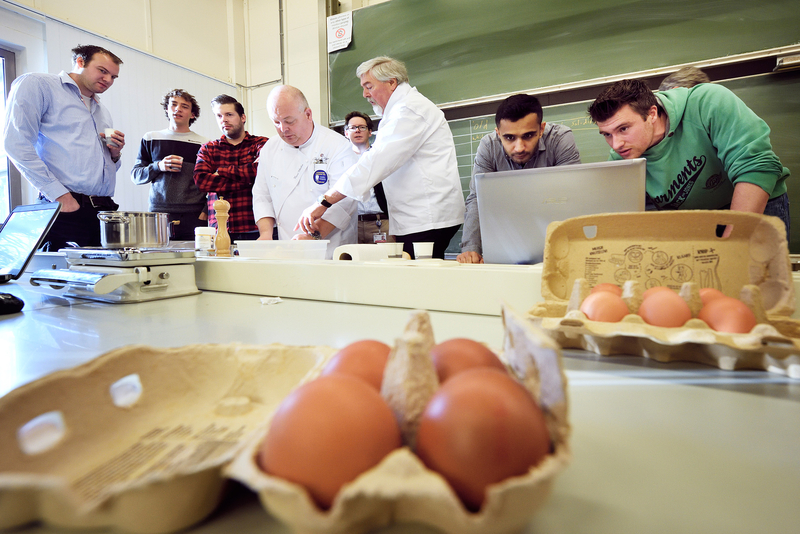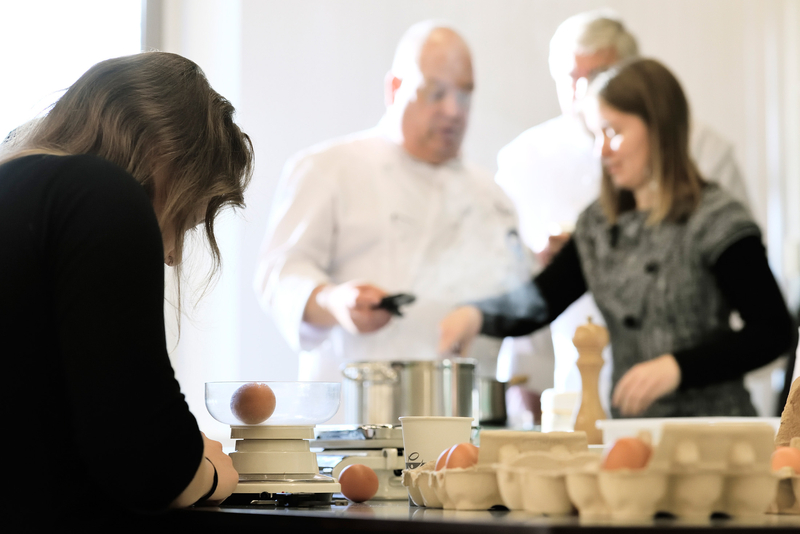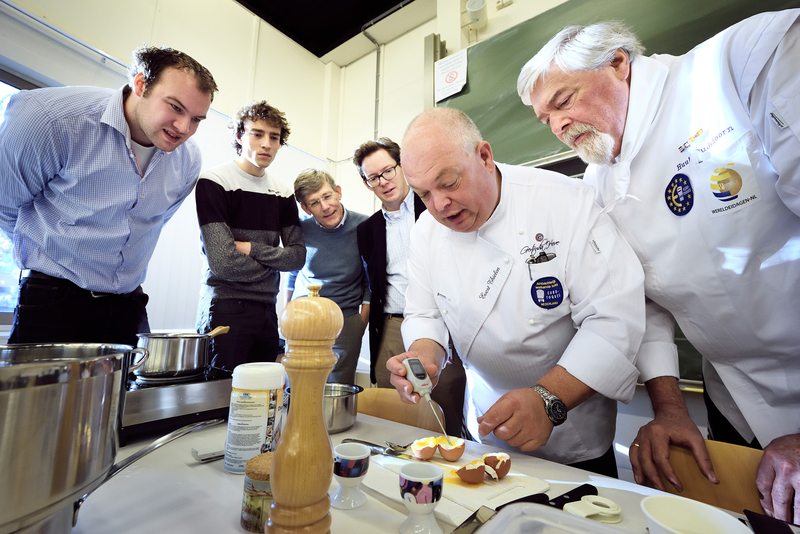
Two professional chefs stand in a classroom, closely observing a soft-boiled egg. What may initially sound like a cooking class is actually part of a physics course offered at the Technische Universiteit Eindhoven (TU/e) in the Netherlands. Using COMSOL Multiphysics, students are investigating the science behind cooking the perfect soft-boiled egg. See how this innovative blend of simulation research and food science is teaching students how to build and test models.
Bringing Simulation into the Classroom…and the Kitchen
From year to year, the community utilizing simulation-led design continues to grow. Recognizing the benefits of performing analyses in the virtual environment, more and more organizations are embracing the use of such tools to address complex design problems and accelerate time-to-market. Many of today’s universities are following suit with this trend, weaving simulation-based studies into their curriculum for engineering students. The idea is that by familiarizing students with these tools, professors can better equip them with the skills and knowledge that will help drive their success in the future.
Jan-Jaap Koning, a member of the university teaching staff at the Technische Universiteit Eindhoven (TU/e), recognizes firsthand the importance of simulation in the classroom. As a COMSOL Multiphysics user for 12 years, Koning is quite familiar with the many features and functionality available in the software, as well as its growing influence in design and development. He eventually decided to take this knowledge of the software and share it with his students in a course titled “Physics of Engineering Problems”.
To keep things both fun and interesting, Koning and his colleague Hjalmar Mulders have combined the science of simulation with the art of cooking. Working side-by-side with professional chefs, groups of students determine how to make the perfect soft-boiled egg — a recipe that they develop with COMSOL Multiphysics.

Students prepare to impress chefs with their simulation-based recipes. Photo by Bart van Overbeeke.
A Recipe for Success: Cooking Up the Perfect Egg
Before making it to the kitchen, there are a few initial steps that the students need to take. It all begins with listening to a heat transfer lecture from a theoretical physicist. The lecture helps explain important concepts behind heat transfer, knowledge that can be later applied to the simulation studies.
After the lecture, students receive their assignment. The idea is for them to estimate how much time is required to heat an egg yolk based on a rough estimate. While the task itself may sound straightforward, the goal of creating a perfect soft-boiled egg can be rather demanding. In order to eliminate bacteria and avoid overheating, the yolk must be between a temperature of 70°C and 65°C. Further adding to the challenge is the fact that both an old egg and a fresh egg are incorporated into the mix.

A student examines her egg. Photo by Bart van Overbeeke.
Nine groups collectively work together to create a theoretical model that illustrates the process behind egg boiling. COMSOL Multiphysics, as Koning notes, is an ideal tool for the classroom setting, as learning the basics of the software comes rather easily and quickly to the students. “COMSOL Multiphysics is very accessible,” Koning stated. “It takes very few hours to learn how to build a model.”
When it comes to their approach, each group follows a path of their own. Some teams, for instance, account for their egg’s air chamber and shell, while others view these factors as negligible. The flexibility and versatility of the simulation software enables every team to tackle the problem differently. Eventually, the entire class comes together to discuss whether or not they think their results are accurate. In this sense, both successes and failures provide the students with a valuable learning experience.
The final step is for the teams to turn their simulation-based recipes into edible dishes. They do so with the help of hot plates, cold water, thermometers, and timers. These dishes are served to judges, professional chefs in this case, who decide whether or not the eggs are boiled to perfection.

Professional chefs judge the students’ projects. Photo by Bart van Overbeeke.
The winners of the most recent competition — Jonathan Op de Beeck, Stijn Jooken, and Max Limpens — successfully accounted for the difference between a fresh and an old egg by cooking the fresh egg for a minute less. This decision was based on their hypothesis that there is a larger air chamber in the older egg.
Simulations show the difference between the warming up of a fresh egg (top) and an old egg (bottom). Animations provided by Jonathan Op de Beeck and Stijn Jooken.
What’s the Next Course (of Action) for Teaching Simulation?
The assignment, as it turns out, is quite a hit with students. In fact, a large percentage of those who take this course choose it as a free elective. “It is very motivating for students to learn by working with a tool like COMSOL Multiphysics, as it shows them how they can apply their academic knowledge,” Koning mentioned.
In the future, Koning plans to continue using simulation for educational purposes and he eventually intends to develop an app-building exercise to help further advance students’ engineering skills. He hopes that such an approach will keep individuals enthralled in the learning process while also preparing them for the future.
Learn More About Simulation’s Role in Food Science and in the Classroom
- Cursor, an independent news site for the Technische Universiteit Eindhoven, features an article about this project. You can read it here (Note: This article is in Dutch)
- Want to learn about further applications of simulation in food science? We’ve blogged about several related topics previously:
- Get inspired by additional uses of COMSOL Multiphysics in the classroom:




Comments (2)
Altyn Zaisanbayeva
April 6, 2016Good afternoon! n. It’s very interesting topic and I’m doing a presentation
Can you send me a picture in gif file, please
Caty Fairclough
April 6, 2016Hi Altyn,
Thanks for your interest in this blog post! I’m very sorry, but we’re not able to share these files. I apologize for the inconvenience!
Best,
Caty